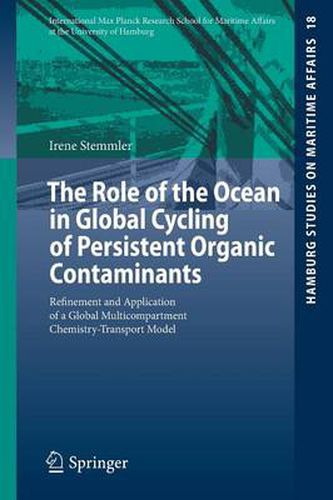Readings Newsletter
Become a Readings Member to make your shopping experience even easier.
Sign in or sign up for free!
You’re not far away from qualifying for FREE standard shipping within Australia
You’ve qualified for FREE standard shipping within Australia
The cart is loading…






This title is printed to order. This book may have been self-published. If so, we cannot guarantee the quality of the content. In the main most books will have gone through the editing process however some may not. We therefore suggest that you be aware of this before ordering this book. If in doubt check either the author or publisher’s details as we are unable to accept any returns unless they are faulty. Please contact us if you have any questions.
Persistent organic contaminants, which are bioaccumulative and toxic are a concern for the ecosystems and human health and are regulated under international law (global and regional conventions, besides other). If semivolatile, they cycle in different environmental compartments and follow complex transport pathways. The ocean is believed to play a key role in the cycling by accumulating and storing the contaminant and providing a transport medium. But substance fate in the marine environment is not fully understood yet. Here, the global multicompartment chemistry-transport model MPI-MCTM is used to study the fate of organic pollutants in the marine and total environment. For the first time historical emission data are used in spatially-resolved long-term simulations of an insecticide, DDT, and an industrial chemical, perfluorooctanoic acid (PFOA). The model results give new insights into the cycling of these substances as different spatial and process resolutions were tested. E.g. for DDT the model results show saturation and reversal of air-sea exchange, which was not indicated by any other study before.
$9.00 standard shipping within Australia
FREE standard shipping within Australia for orders over $100.00
Express & International shipping calculated at checkout
This title is printed to order. This book may have been self-published. If so, we cannot guarantee the quality of the content. In the main most books will have gone through the editing process however some may not. We therefore suggest that you be aware of this before ordering this book. If in doubt check either the author or publisher’s details as we are unable to accept any returns unless they are faulty. Please contact us if you have any questions.
Persistent organic contaminants, which are bioaccumulative and toxic are a concern for the ecosystems and human health and are regulated under international law (global and regional conventions, besides other). If semivolatile, they cycle in different environmental compartments and follow complex transport pathways. The ocean is believed to play a key role in the cycling by accumulating and storing the contaminant and providing a transport medium. But substance fate in the marine environment is not fully understood yet. Here, the global multicompartment chemistry-transport model MPI-MCTM is used to study the fate of organic pollutants in the marine and total environment. For the first time historical emission data are used in spatially-resolved long-term simulations of an insecticide, DDT, and an industrial chemical, perfluorooctanoic acid (PFOA). The model results give new insights into the cycling of these substances as different spatial and process resolutions were tested. E.g. for DDT the model results show saturation and reversal of air-sea exchange, which was not indicated by any other study before.